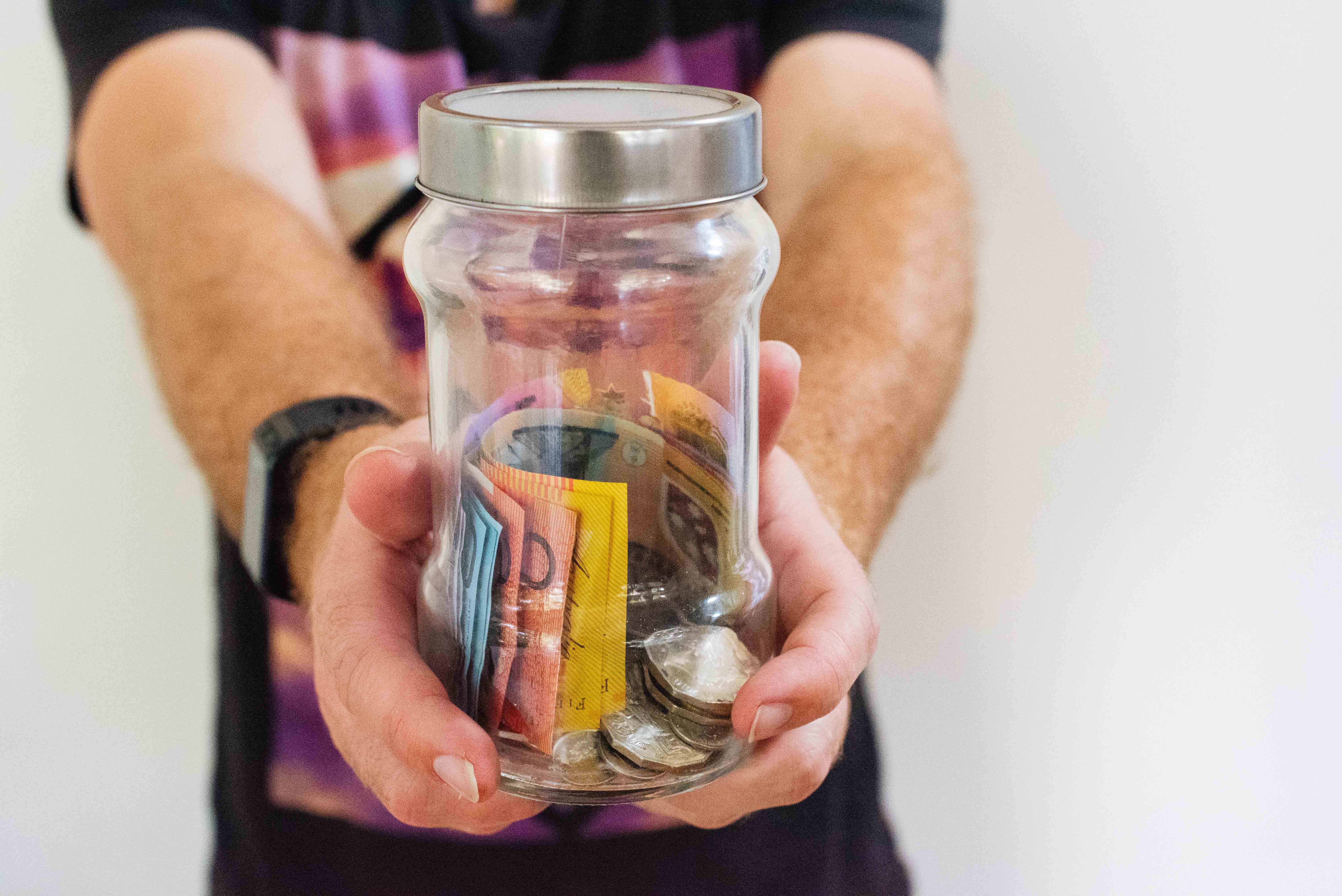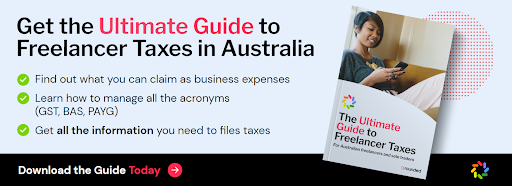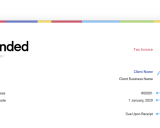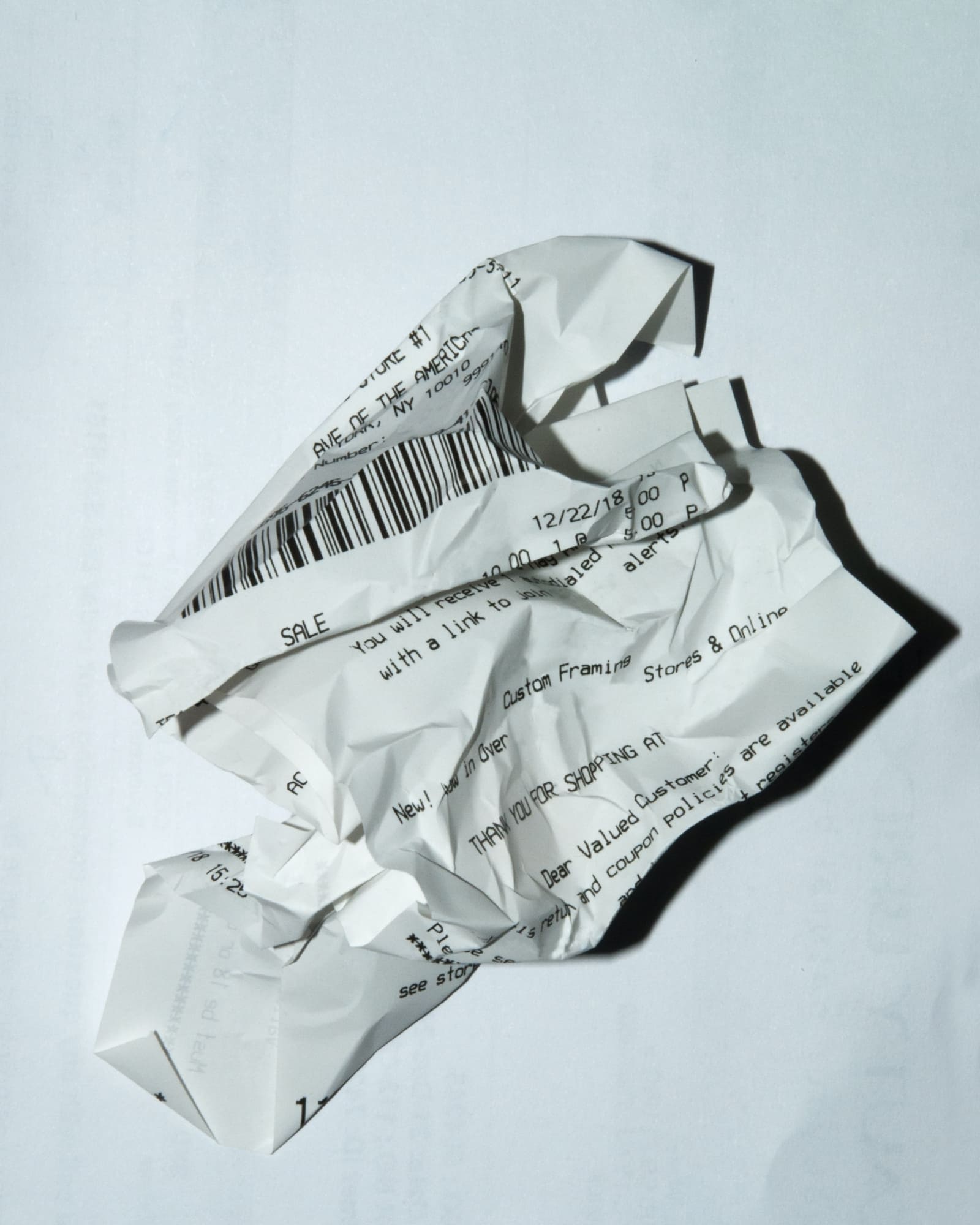
Should you register for GST?
If you’re confused by the concept of GST, you’re not alone. Many freelancers and sole traders in Australia aren’t sure if they need to register for GST, or how to calculate it and charge clients appropriately.
Article contents
− +- Introduction
- What is GST?
- Do I need to register for GST?
- Voluntary GST registration
- When to register for GST
- How to register for GST (steps and checklist)
- How to calculate GST
- Formula to determine how much GST you were charged
- Australia GST calculator
- When should you charge GST?
- Key GST exceptions for freelancers
- Current considerations by the ATO
- Adding GST to your invoices
- Paying GST to the ATO

Let’s break down exactly what GST is and what it means for your freelance business. In this article, we’ll cover:
The basics of GST
Who needs to register for GST
When and how to register for GST
How to calculate GST
How to include GST on your invoices
How to pay GST (quarterly or monthly)
Before we start, a disclaimer: The information in this article is general in nature and not designed to be personal financial advice. You must talk to an accountant or the ATO for tax advice related to your own personal circumstances.
What is GST?
GST stands for goods and services tax: It’s a tax on goods and services sold in Australia, first introduced in July of 2000. In the vast majority of cases, GST is a 10% tax.
Ultimately, consumers are the ones who end up paying GST, but businesses that provide goods and services are responsible for collecting the tax on behalf of the government.
It’s important to note that GST is not counted as income or revenue. Instead, you are simply collecting the tax from your customers and passing it on to the ATO, usually on a quarterly or monthly basis.
The amount you remit to the ATO will be calculated as the GST you collected minus the GST you paid on products and services you used for your own business. In some cases, if you pay more GST than you collect, you may be eligible for a GST refund.
We’ll go through all of the important things you need to know about GST in this article, but you can always learn more information by visiting the ATO’s official page on GST.
Do I need to register for GST?
If you are a sole trader or freelancer doing business in Australia, there’s a chance you may need to register for GST. It depends on two factors:
Meeting the $75,000 threshold
If at any point your gross income (the money you make before taxes and deductions) from your business is $75,000 or more in a single tax year, you need to register for GST and begin charging a GST fee to Australian clients. For non-profit organisations, the threshold is $150,000 in revenue.
An important note for freelancers who have more than one job: You only pay GST if you are earning $75,000 or more from a single business.
For example, if you are earning $35,000 from your side business, but you have another employer paying you $50,000 per year, you would NOT need to register for GST.
GST for the sharing economy
If you earn part or all of your income through the “sharing economy,” it may be subject to GST as well. The ATO puts a number of income sources in this category, including:
Ride share drivers (using services like Uber, DiDi, etc.)
Renting out a room, house, or unit (on platforms like AirBNB , HomeAway, etc.)
Offering creative services or odd jobs (on Airtasker, OneFlare, Mad Paws, etc.)
Drivers for companies like Uber, Ola, as well as taxicab and limousine drivers, must also register for GST even if they are below that figure. In addition to this, drivers must have their own ABN and submit a Business Activity Statement (BAS).
You can learn more about GST and the share economy on the ATO’s website.
Voluntary GST registration
You can choose to register for GST even if you earn less than $75,000 per year or don’t provide rideshare services.
Why would you want to apply for voluntary registration? There are a few reasons.
Business perception. Potential clients may value your business and services more, simply because you are charging GST. In other words, it makes your business look like it’s already performing well, even if you’re still in growth mode.
Avoid surprising clients later. When you begin paying GST, you’ll need to start charging clients to cover the cost of the tax. Doing so now, even if you’re below the threshold, means you won’t have to surprise clients with a sudden fee hike later on.
Claim more GST credits. When you make purchases for your business and you’re charged GST, you can often claim GST credits to reimburse yourself. We’ll explain how to do this later in the article, but if that sounds appealing to you, voluntary GST registration may be a wise move.
When to register for GST
Typically, you need to register for GST as you are approaching the $75,000 threshold. If you’re using Rounded already, this part is really easy—you can see your total annual income right on your dashboard at any time.
Once you hit the threshold, you have 21 days to notify the ATO and register for GST.
If you launch a new business and reasonably expect to reach the threshold in your first year, you should also apply for GST. Anyone planning to claim fuel tax credits for their business also needs to apply.
A word of warning: If you are not registered for GST when you should be, it’s very likely the ATO will catch up with you and make you pay GST on the excess income you earned. You may also have to pay a fine and interest on the excess amount, so it’s wise to check on your annual income regularly throughout the tax year.

How to register for GST (steps and checklist)
Registering for GST is a straightforward process, but it's important to be prepared before you begin.
Here’s how to prepare for the application process and register for GST, plus resources to help you along:
Checklist for registering for GST
Before you register for GST online, you need to gather a few important items:
A MyGov account linked to the ATO. You can create one or sign in here.
An Australian Business Number (ABN). It’s free to acquire and can be done through your MyGov account or by calling the ATO on 13 28 66.
Your business details, including your business structure and main business activity. Here’s our guide to choosing between sole trader vs. company.
Your estimated annual turnover (see our guide for help)
Your sole trader bank account details for any potential refunds
GST registration process
Once you’ve gathered all the information you’ll need, you can begin the registration process:
Log in to your myGov account and access the ATO portal.
Navigate to the business registration section.
Select the option to register for GST
Enter your business details and answer the questions about your business activities.
Choose your reporting frequency (usually quarterly for most small businesses).
Review all the information you've entered and submit your application.
After you submit your application, the ATO will process it and send you confirmation of your GST registration. This usually happens within 14 days, but can be quicker if all your details are in order.
Important decisions to make when registering for GST
As you go through the registration, you’ll likely need to make three decisions:
Start Date: Choose when you want your GST registration to begin. This can be the current date, a future date, or a past date (up to four years ago if you've been operating but haven't registered). Here is more information on backdating GST.
Accounting Method: Decide between cash or accrual accounting. For most freelancers and small businesses, cash accounting (where you report GST when you receive payment) is simpler.
Reporting Cycle: Choose how often you want to report and pay GST. Quarterly is the default for most sole traders, but monthly or annual options are available depending on your circumstances.
How to calculate GST
Now that you’re registered, you’ll need to make sure you are calculating GST for every transaction you make and adding it to your invoices.
If you are using Rounded as your accounting software, this process is simple. You can toggle GST on and off on your invoices, and the software will take care of the calculations. Rounded users can also choose whether to display pricing inclusive or exclusive of GST.
For everyone else, here are the basic calculations you’ll need:
Formula for adding GST
When it comes to adding GST, the formula is pretty simple:
Original Cost x 0.1 = GST
For example, if you are charging a client $500 for a service, the GST calculation would look like this:
$500 x 0.1 = $50
$500 + $50 = $550
In this case, you’d send an invoice for $550, charging the client for the full price of the service plus GST.
Formula to determine how much GST you were charged
In some cases, you may need to figure out how much GST was included in the price of something you purchased. (This is a skill you’ll need for claiming GST credits.)
In this case, it’s not quite as straightforward. You cannot simply subtract 10%, because you’ll end up with a different figure. Instead, use this formula:
Amount Charged ÷ 11 = GST charged
For example, let’s say you made a purchase that came to a total cost of $487. To determine how much of that was GST, you’d use this formula:
$487 ÷ 11 = $44.27 GST
Australia GST calculator
Looking for a quick way to calculate your GST? This calculator makes it very simple to answer the question, “How much is GST?” in just a few clicks:
When should you charge GST?
Generally, a GST-registered freelancer or contractor should include GST on all transactions for the services they provide. It’s good practice to charge GST on the same invoice you send for any product or service you provide. (More on how to do that below.)Most people who have been doing business in Australia for a while will be well aware of GST, but it may still be a good idea to remind your clients about GST when you send over a quote. That way, there are no surprises when they receive your first invoice.
Key GST exceptions for freelancers
Knowing when to charge GST is crucial, but it's equally important for sole traders to know when GST doesn't apply.
There are many exceptions to GST, and we’ve outlined some of the most relevant for freelancers below. You can use the ATO’s searchable database of exceptions or visit this page for more details.
Services to Overseas Clients: If you're providing services to clients outside of Australia, these are generally considered GST-free exports. This can be particularly relevant for freelancers in fields like graphic design, writing, or digital marketing who work with international clients. Learn more about GST and overseas clients here.
Educational Services: If you offer certain types of educational courses or tutoring services, these may be GST-free. This could also potentially apply to sole traders who offer online courses.
Health Services: Workers in the health sector may find that some of their supplies and services are GST-free if they meet specific criteria set by the ATO.
Financial Services: Some financial services are input-taxed, meaning you don't charge GST on them. This includes some transactions around rental properties, as well as lending money.
Food: While most prepared food is subject to GST, some basic food items are GST-free. If you sell food products as part of your freelance operation, look into these exceptions.
Child care: Child care services provided at approved centres or by registered carers are GST-free.
Charitable activities and religious services: Services of a religious nature are generally GST-free, and some charitable activities are also exempt.
Water and sewage: The supply of water and sewerage services is GST-free. If you run property management or maintenance services, this could be relevant for your freelance business.
Cars and car parts: In some situations, the leasing of vehicles or the sale of car parts (including tyres and batteries) can be GST free. However, the rules around this are quite complex, so check out the ATO’s breakdown if this relates to your business.
Current considerations by the ATO
The Australian Taxation Office (ATO) regularly reviews GST regulations to ensure they remain relevant and fair. As of September 2024, several items are under consideration for potential GST-free status, including:
Sunscreen supplies
Baby formula supplies
Prepared meals
These potential changes highlight the dynamic nature of GST regulations. To stay informed about these and other updates, it's wise to regularly check the ATO's Advice Under Development program.
Adding GST to your invoices
Whenever you charge GST to a client, you’ll need to record it on your invoices.
Include the GST separately on the invoice, and add it to the subtotal
If you are charging GST, you must label the invoice as a “Tax Invoice”
If you are not charging GST, you only need to label it “Invoice”
For Rounded users, it’s easy to include GST on your invoices—we even do the calculations for you. You can toggle GST charges off and on, if you’re dealing with clients overseas as well as those here in Australia. Learn more about how Rounded can make invoicing fast and easy.
Paying GST to the ATO
Once you've registered for GST and started charging it on your invoices, you'll need to report and pay the collected GST to the Australian Taxation Office (ATO). This is typically done quarterly through your Business Activity Statement (BAS).
When it's time to lodge your BAS, you'll need to calculate the total amount of GST you've collected from your sales, then subtract the GST credits you're entitled to claim on your business purchases. The difference is the amount you need to pay to the ATO. It's crucial to maintain accurate records of all your sales and purchases, including the GST component, to make this process easier.
Check out our full guide on filing your quarterly BAS for more guidance.
Rounded simplifies the process of tracking GST and preparing for your BAS. You can automatically calculate the GST on your invoices and expenses, making it easier to know exactly how much GST you've collected and how much you can claim in credits.
Cover Photo by Melissa Walker Horn on Unsplash
Contents
- Introduction
- What is GST?
- Do I need to register for GST?
- Voluntary GST registration
- When to register for GST
- How to register for GST (steps and checklist)
- How to calculate GST
- Formula to determine how much GST you were charged
- Australia GST calculator
- When should you charge GST?
- Key GST exceptions for freelancers
- Current considerations by the ATO
- Adding GST to your invoices
- Paying GST to the ATO
Join newsletter
ABOUT ROUNDED
Invoicing and accounting software for sole traders. Get paid faster and relax at tax time.


























-p-1600.jpeg)
